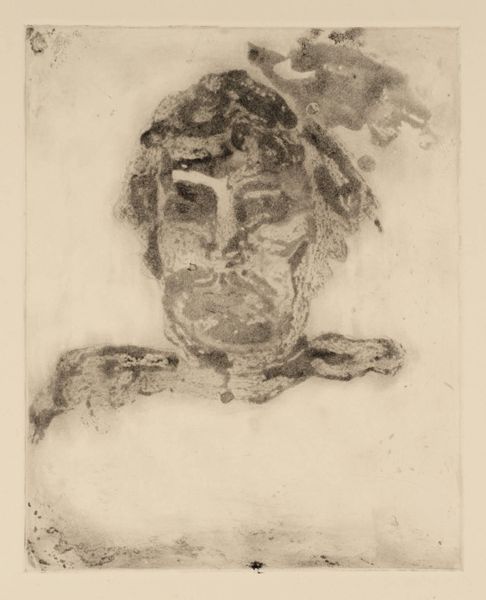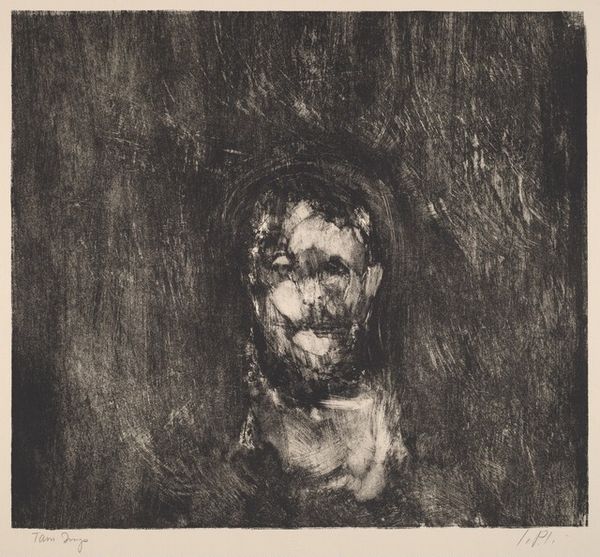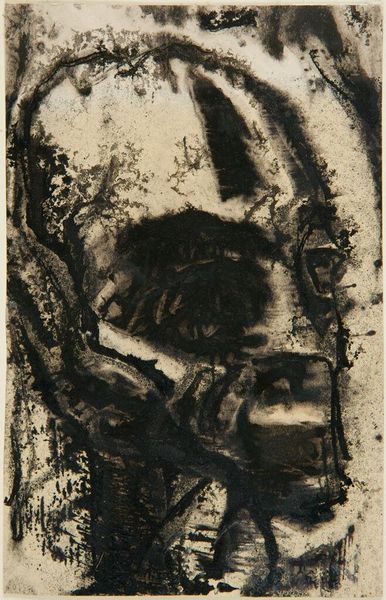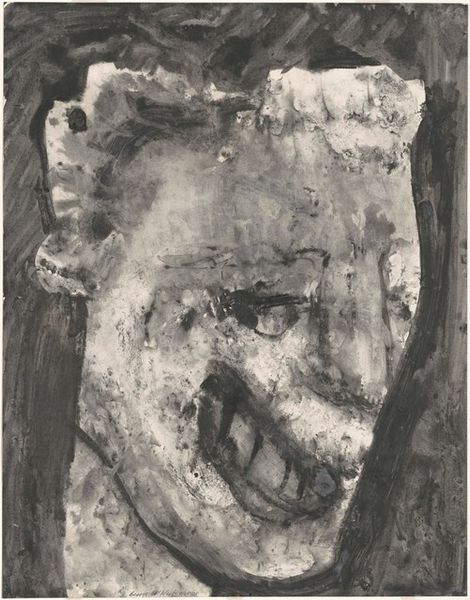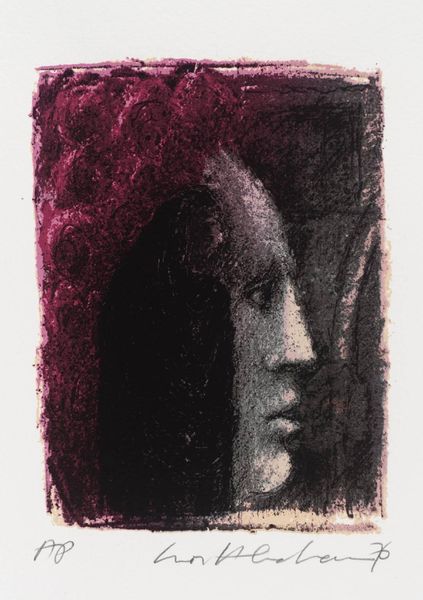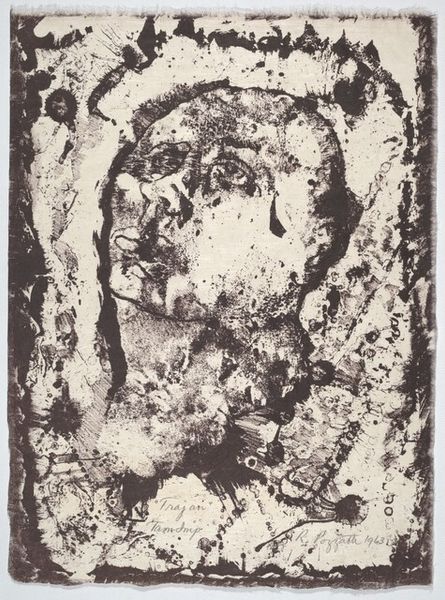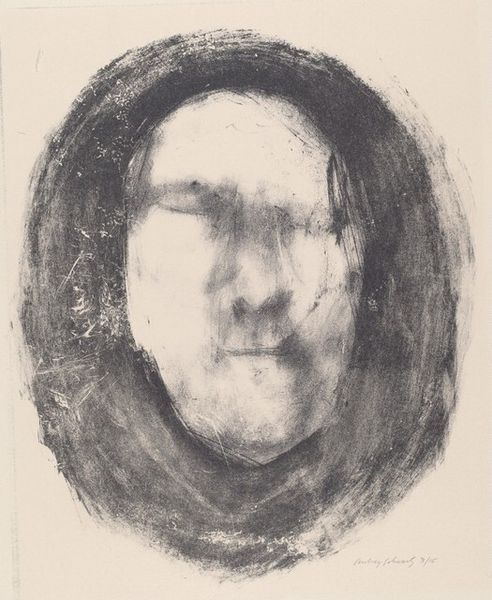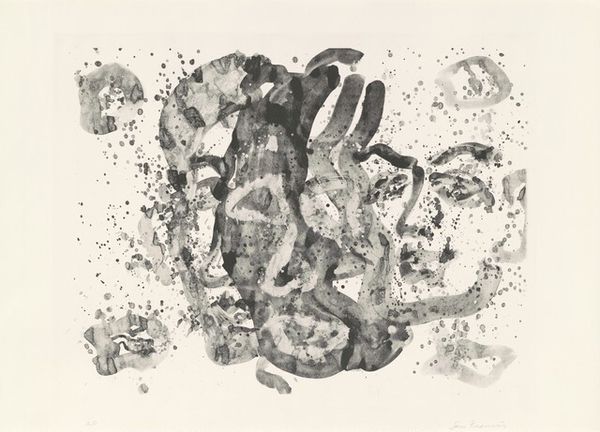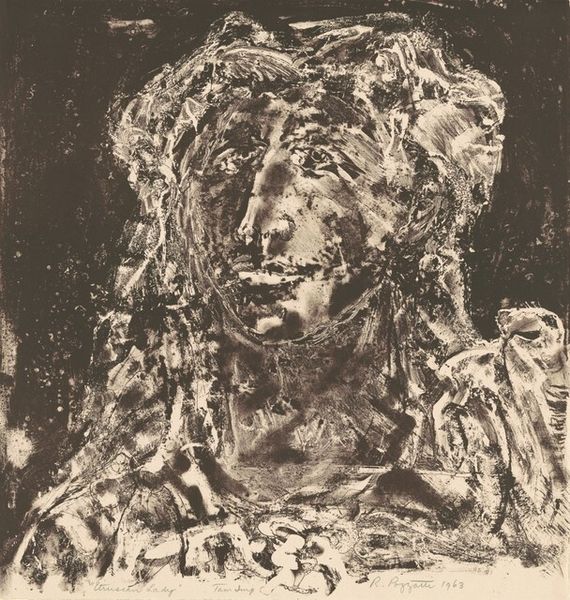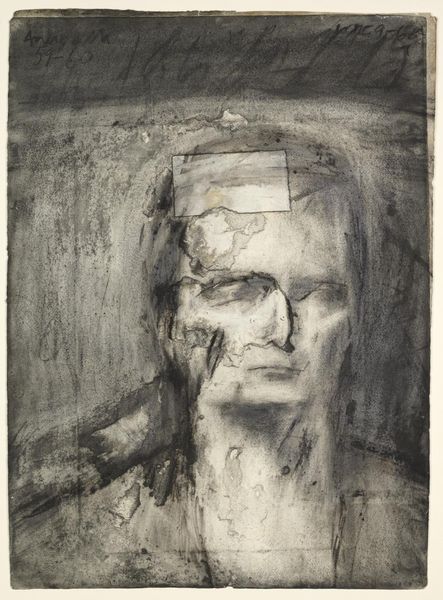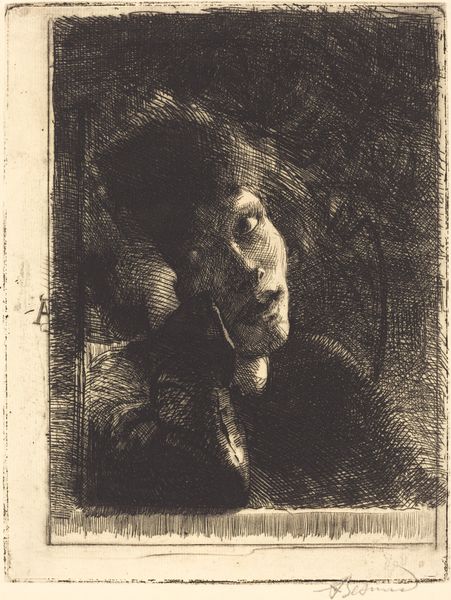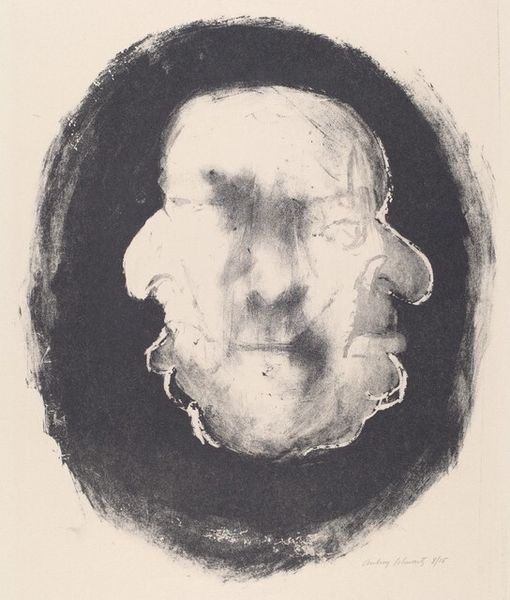
Dimensions: image: 302 x 254 mm
Copyright: © Tate | CC-BY-NC-ND 4.0 DEED, Photo: Tate
Curator: Here we have Cecil Collins’s “Head,” a lithograph held in the Tate collection. There's no specific date of execution given for this work. Editor: My first impression is one of vulnerability. The face seems to emerge from shadows, a kind of raw, exposed psyche. Curator: Collins developed a personal iconography rooted in Romanticism, particularly influenced by William Blake. He strived to express universal spiritual values. Editor: Absolutely. I see echoes of Blake's visionary heads and a sense of the eternal human condition. The lack of specific features makes it an archetypal face. I’d say it’s very Jungian in its symbolism. Curator: It's interesting how his work gained traction during the rise of abstract expressionism, a time when artists were exploring subjective experience. Collins's spiritual humanism offered a different perspective. Editor: It’s a reminder that the human form itself can be a landscape of inner experience. The art-historical and psychological resonances just deepen the visual experience.
